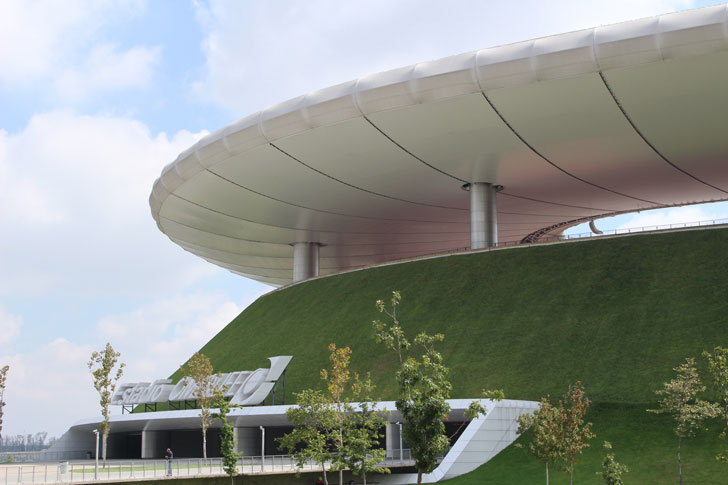Nanotextures solve a historic problem
Nanotexturing that prevents scale forming on the inside of pipes can reduce plant maintenance costs significantly
A new coating for buildings could take us one step closer to an energy-efficient architecture.
Science can frequently push the boundaries of our logic and intuition. For instance, with concepts such as the curvature of spacetime or the quantum behavior of coupled particles. In the same manner, the practical applications of some scientific discoveries can prove bewildering. At first glance, we would find hard to believe that the sunlight could be used as a way of cooling buildings. This, however, is the idea behind the technology developed by Yaron Shenhav and the team at SolCold, an Israeli startup.
The feasibility of cooling down through laser beams had been known for some time. The underlying principle is that certain materials, reacting to the photons that strike on them at an atomic scale, can release photons with a higher frequency or energy, which means that a net energy loss takes place. This would cause an active refrigeration of the surface, not merely dissipating energy. Shenhav, who had his eureka moment on a scorching-hot day in an apartment in Tel Aviv with a malfunctioning AC unit, decided to put this principle to work, making use of the solar spectrum instead of laser beams.
The outcome was the patent-pending Anti-Stokes Fluorescence technology, which uses a double-layered coating: the top layer filters the photons from the solar spectrum while the bottom one transforms heat into light. The lab simulations show that low ceiling rooms with metal roofing can achieve better results than concrete rooftops, with temperatures of up to 10 oC below those attained with the traditional white paint coating. However, currently, there are some aesthetic limitations. As Henry Ford would say, you can choose any color you wish as long as it is a pale blue.
Although this paint, with a 300$ per 100 square meters cost, is comparatively more expensive than standard options, there can be quite substantial energy savings. According to SolCold’s estimates, it can decrease energy consumption by up to 60 percent, while lasting 10 to 15 years before needing a new coat. The first clients are thus expected to come from the business world.
Finally, the applications of this cooling paint are not limited to our planet. Indeed, space stations and satellites could also benefit from its features. Although temperatures in the outer space are extremely low, the lack of atmosphere reduces the dissipation of the heat generated by solar radiation. Currently, reflective materials are used, but this could be a much more efficient solution.
The new SolCold paint, however, does have some disadvantages. For starters, its cooling effect works both during the summer and winter, so it would be best used in the Middle East or deserts.
However, it’s still too early to ascertain the possibilities afforded by this technology as the first commercial tests will not take place until April 2019.

SolCold’s paint is far from being the only system to address global warming while decreasing energy consumption. In 2015, the Universidad Politécnica de Madrid (Spain) and the Universitá Politecnica delle Marche (Italy) jointly researched the energy efficiency achieved by the so-called living roofs, i.e, buildings covered with vegetation. Together with their carbon dioxide absorbing capabilities, buildings equipped with this system absorbed up to 60 percent less heat than buildings without it. Lastly, during the summer, constructions with this green cover release 9 percent more energy than that which they absorb.
Source: New Scientist, Futurism
All fields are mandatory.
Read the most discussed articles
{{CommentsCount}} Comments
Currently no one has commented on the news.
Be the first to leave a comment.
{{firstLevelComment.Name}}
{{firstLevelComment.DaysAgo}} days ago
{{firstLevelComment.Text}}
Answer{{secondLevelComment.Name}}
{{secondLevelComment.DaysAgo}} days ago
{{secondLevelComment.Text}}